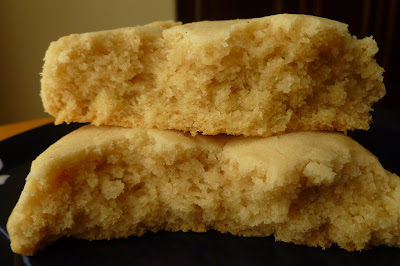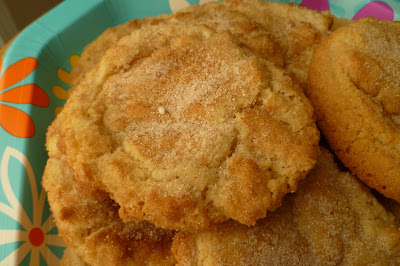Heads up that I’m about to start a series of posts on different chocolate chip cookie recipes. I hadn’t started out with this series in mind. Instead, I had made a couple of different recipes at different times just to try them. And since I’m always behind on blogging, I’ve had them for some time. Then one weekend, my niece had asked if I could make chocolate chip cookies for her coworkers. She needed 3 dozen and most of the recipes I had pinned on my pinterest board made anywhere from 12-18 cookies so I figured it would be a good chance to try out several cookie recipes at once. Which then led me to wonder about the differences between the recipes and how that would alter the texture or taste of any of them. It was the closest thing to “scientific testing” I was likely to do but this was something that has always been nagging at me (insert first world problem here).
Why were there so many variations and what really changed
between them? Why was one cookie better than another? What made it so? What
really constituted “better”? How could varying different proportions of what
are essentially the same base ingredients really changing the cookies? How do
different ways to mix together cookie dough change the cookies themselves that
much? So many questions, so many recipes to try.
I already had two by default before I even embarked on
this, er, quest. Baking for my niece added another 4 kinds. And I added more
from there.
Before I unveil them – and you know it’ll be a protracted
process with all of these different recipes – I’ll give you a sneak preview of
what I’ve tried (the ones pictured here are the ones I liked best). First, let’s be clear. There’s never a bad chocolate chip
cookie. Not the way I make them, says me immodestly. Second, regardless of the ingredients list, I
have my own process for mixing cookie dough and baking cookies that has stood
me in good stead through the years and countless cookie recipes. I will be
sharing those so you, too, can make amazing, pack-the-pounds-on cookies that’ll
be worth those empty calories (let’s not kid ourselves). And third, remember,
what’s “the best” to one person may not be the best to another. Just so you
know, my criteria of what makes THE BEST chocolate chip cookies are they’re
thick and chubby, loaded with milk chocolate chunks or chips (you can
substitute semisweet if you’re not me), have crisp edges, chewy ooey gooey
middles, and an amazing caramelized brown sugar flavor complemented by the
melty goodness of (milk) chocolate chips/chunks. No nuts! If you like any of
those things, read on, MacDuff. Loosen your belt, factor in extra workouts
for the next few weeks, run an extra mile or five and kiss that bikini body goodbye.
Lastly, because there’s never a bad chocolate chip cookie (see above paragraph) but there are gradations of good cookies, rather than stack ranking each recipe by number, I’m going to group them into broader categories: good, great and best. Remember my picky scale? That means “good” to me is usually “these are delicious” to most other people. “Great” to me = “OMG, these are amazing” from others. My “best” means I had more than 1 cookie and other people’s reactions range from “that’s my favorite cookie ever” to “I hate you, I can’t fit into my clothes anymore, are there anymore cookies left?”
Lastly, because there’s never a bad chocolate chip cookie (see above paragraph) but there are gradations of good cookies, rather than stack ranking each recipe by number, I’m going to group them into broader categories: good, great and best. Remember my picky scale? That means “good” to me is usually “these are delicious” to most other people. “Great” to me = “OMG, these are amazing” from others. My “best” means I had more than 1 cookie and other people’s reactions range from “that’s my favorite cookie ever” to “I hate you, I can’t fit into my clothes anymore, are there anymore cookies left?”
To provide a little suspense, we’ll start with the Good
category, move to Great and end with Best. I encourage you to make your own
experiments and decide where you’d put each cookie into which category.
- Use butter. If it isn’t butter, don’t bother. If you use margarine, I wash my hands of you. Really.
- Milk chocolate chunks – I like to buy the Pound Plus bar from Trader Joe’s, chop it up and use in ONE recipe. You can substitute semisweet if that’s what you prefer. I did have to use chocolate chips in some of the recipes out of necessity, meaning I didn’t have the TJ’s bar on hand when I made the dough,
- Chill the dough. No matter what. Trust me. Portion into dough balls and chill, covered, in the refrigerator or put directly in freezer bags and put in the freezer. To develop the flavors the most, chill for 24 hours in the fridge, then, if you have the patience of a saint, put in the freezer for overnight then bake.
- Substitute at least ¼ cup of the granulated sugar with turbinado or raw cane sugar. It gives an extra crunch in the chewy texture of your cookie and makes them a little different. I didn’t do this with all of the cookies I tried but for the ones I did, I liked those cookies much better.
- Use dark brown sugar, even if the recipe calls for light brown. Dark brown provides more caramelized brown sugar flavor.
- Don’t bake at less than 350 degrees. I often preheated the oven to 375 or even 400 degrees, put the cookies in at 375 for a few minutes then lowered the heat to 350 or 360. This helps the cookies set faster before they spread too much. But I don't recommend baking the whole time at 375 or 400 or else the chips start to burn before your cookies are done. Ask me how I know.
- Don’t overbake! Ever. Bake just until the edges are golden brown and the middles don’t look like raw melted dough. If the edges are already too brown and the middle still looks doughy, take them out anyway. Once they set, they’ll still be okay.
- Make the dough balls big, at least golf-ball size. This isn’t the time to be dainty.
- Don’t bake too many at once. The beauty of making dough balls and freezing them is you can bake only as many as you need when you need them.
That’s enough food for thought – haha – for now. First
cookie recipe goes up tomorrow.

















































